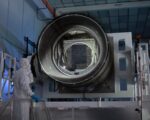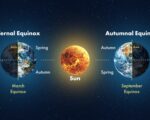Earth has recently captured a small asteroid, 2024 PT5, temporarily turning it into a “second moon.” This rare occurrence, confirmed by teams from the Massachusetts Institute of Technology (MIT) and the Complutense University of Madrid, offers a fascinating glimpse into the phenomenon of “mini-moons”—tiny celestial objects that Earth occasionally snares into orbit for short periods. However, this temporary companion won’t remain for long. By mid-November 2024, 2024 PT5 is expected to escape Earth’s gravitational influence and continue its journey around the Sun.
The asteroid 2024 PT5 was first spotted on August 7, 2024, by NASA’s Asteroid Terrestrial-impact Last Alert System (ATLAS) at the Haleakala Observatory in Hawaii. Following this discovery, astronomers from the Complutense University conducted further observations using a high-powered telescope in Sutherland, South Africa. While Earth has captured such mini-moons before, these objects are often difficult to detect due to their small size and the brief nature of their orbits, making them elusive targets for astronomers.
Richard Binzel, a prominent astronomer at MIT, explained that advancements in telescope technology have made it easier to track these transient objects. “We’re only starting to observe these small objects with enough regularity to learn more about them,” Binzel said. This increasing ability to monitor mini-moons is a significant step forward in our understanding of near-Earth objects (NEOs), as it provides valuable data on how such bodies interact with Earth’s gravitational field. The brief capture of 2024 PT5 has generated significant interest among astronomers, eager to study the dynamics of small celestial bodies in Earth’s vicinity.
While the mini-moon’s visit is short-lived, it underscores the dynamic nature of Earth’s interaction with space objects. As astronomers continue to develop more advanced methods for detecting and tracking these transient moons, the scientific community is gaining deeper insights into the population of small asteroids that come close to Earth. This research could improve our understanding of the potential hazards posed by near-Earth objects and their role in the broader context of solar system dynamics.
















